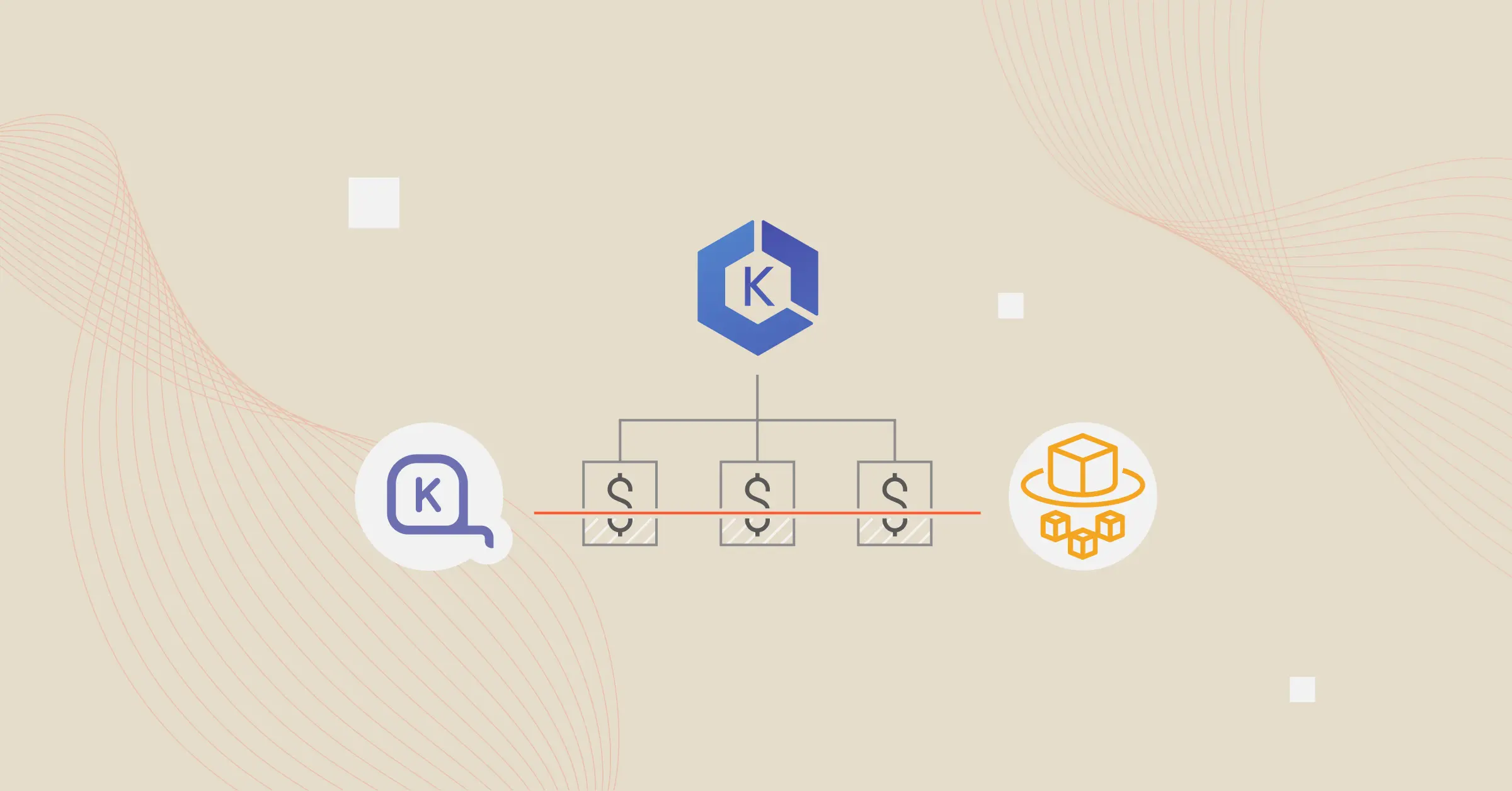Amazon Elastic Kubernetes Service (EKS) has revolutionized the way organizations deploy, manage, and scale containerized applications using Kubernetes. However, optimizing costs on EKS infrastructure remains a challenge for many.
Enter Karpenter, a Kubernetes-native node autoscaler designed to improve resource efficiency.
When combined with EKS Fargate, a serverless compute engine for containers, Karpenter can dynamically provision the right amount of resources, ensuring that you only pay for what you use.
This article delves into the synergy between Karpenter and EKS Fargate, offering insights on how to leverage their combined capabilities to achieve significant cost savings on your EKS infrastructure.
Karpenter: An Overview
Karpenter was specifically developed to work on Kubernetes and designed to automatically provision nodes in response to application and cluster requirements.
Unlike traditional autoscalers that scale based on specific metrics like CPU or memory utilization, Karpenter focuses on the actual pod requirements, ensuring that workloads always have the necessary resources without over-provisioning.
How Karpenter works
- Pod-Based Scaling – Karpenter observes the Kubernetes cluster for unschedulable pods. An unschedulable pod is a pod that cannot be placed on any existing node due to resource constraints.
- Dynamic Node Creation – Karpenter uses something called a Provisioner to define the rules that the tool uses to provision new nodes when triggered. Based on these rules, Karpenter can make a determination on what is the most efficient node to create based on the workload needing the additional resources.
- Efficient Scheduling – Karpenter uses a complex algorithm to efficiently place pods on nodes, maximizing resource utilization and minimizing the number of nodes required.
- Node Termination – To avoid underutilized nodes, Karpenter can also terminate nodes that are no longer needed, ensuring you’re not paying for unused resources.
Karpenter Vs. Cluster Autoscaler
Karpenter and Cluster Autoscaler (CA) differ in their scaling and provisioning approaches. While CA scales based on metrics like CPU and memory, Karpenter scales according to pod requirements, leading to more efficient resource use.
Unlike CA, which scales as part of an auto-scaling group, Karpenter deploys nodes completely outside of ASGs, making the process exponentially faster.
Benefits of Karpenter
- Cost Efficiency – By provisioning nodes based on actual workload requirements, Karpenter can lead to significant cost savings, as you only pay for the resources you need.
- Reduced Management Overhead – Karpenter’s dynamic provisioning reduces the need for manual intervention, making cluster management simpler and more efficient.
- Optimized Resource Utilization – Karpenter’s bin-packing algorithm ensures that nodes are utilized to their fullest potential, reducing waste.
- Improved Scalability – With the ability to quickly provision nodes tailored to workload requirements, Karpenter ensures that applications can scale efficiently and without delay.
EKS Fargate: A Deep Dive into Serverless Kubernetes
Amazon EKS Fargate is a serverless compute engine for containers that work with Amazon EKS. With EKS Fargate, you can run Kubernetes pods without having to manage underlying EC2 instances or node infrastructure.
Serverless architecture of EKS Fargate
The term “serverless” doesn’t mean there are no servers involved; rather, it means that the complexity of server management, provisioning, and maintenance is abstracted away from that user. Here’s what Fargates serverless architecture accomplishes:
- No Node Management: Unlike traditional EKS where you have to manage and maintain EC2 instances, with Fargate, all that is abstracted away. You only focus on deploying your pods.
- Isolation: Each pod runs in its own isolated environment within Fargate, ensuring that there’s no resource contention or security risk from neighboring pods.
Benefits of EKS Fargate
EKS Fargate offers multiple benefits for Kubernetes workloads. It enhances operational efficiency by eliminating the need for infrastructure management, allowing teams to prioritize application development. Cost-wise, Fargate will almost always be more expensive than the traditional EC2 deployment route, since you’re paying a premium for offloading the infrastructure management to AWS, but these can be mitigated by using Fargate in conjunction with a tool like Karpenter.
Deploying Karpenter On An EKS Fargate Cluster
Leveraging Karpenter on an EKS Fargate Cluster is an intelligent way of getting the most out of Karpenter’s inherent cost-optimization capabilities without sacrificing availability or fault tolerance. Here’s a detailed look at their deployment and synergy:
Deployment of EKS Fargate
- EKS Cluster Creation – To begin, you need to deploy a cluster using EKS Fargate. This can be done via the console, or through an IaC tool like Terraform. The key is to ensure that your compute is leveraging Fargate.
- Fargate Profile Creation – Fargate depends on the use of Fargate Profiles, which is how you determine which pods run on Fargate. Once the cluster is up and running, the next step is to create a profile for Karpenter pods to run. Typically, you’d name this something obvious and simple, like ‘Karpenter’. A profile can use different selectors, like namespace, to determine what it should manage and place on Fargate.
Deployment of Karpenter
- Install Karpenter – Karpenter can be installed on an EKS cluster using Helm, which is a package manager specifically developed for Kubernetes. Once you add the Karpenter repository, you can run one command to get Karpenter installed on your cluster.
- Provisioner Configuration – As mentioned before, the provisioner is what determines how Karpenter behaves and the rules it abides by when provisioning new resources. You can tell Karpenter to only deploy in certain subnets or availability zones, only deploy certain instance types, use additional security groups, and many other parameters.
How EKS Fargate And Karpenter Work Together
The essence of Karpenter on EKS Fargate lies in utilizing Fargate to maintain the longevity of your Karpenter pods, while delegating a minor segment of your infrastructure to Fargate’s management.
This way, we’re able to take advantage of having minimal long-lasting infrastructure, while not having to worry about the premium we pay for offloading the management of our servers.
Karpenter is then used to handle the scaling out and in for all of our workloads, ensuring that we only deploy the most optimized instance types we need based on the workloads that we’re looking to host.
How Can We Use CloudZero To Help With Cost Optimization?
Building on the foundation above, we can integrate a platform like CloudZero to further streamline our cost management strategy.
CloudZero specializes in providing visibility into cloud spending, pinpointing areas of inefficiency or unnecessary expenditure.
By analyzing your EKS Fargate and Karpenter deployments, CloudZero can provide a single pane of glass to view all of your deployments and resources within one console, helping us identify underutilized resources, misconfigured settings, or other cost-drivers that might otherwise go unnoticed.
This granular insight not only helps in optimizing costs but also ensures that every dollar spent on the cloud infrastructure is genuinely adding value to the business. In essence, while EKS Fargate and Karpenter set the stage for efficient resource management, CloudZero ensures that this translates into tangible financial savings.
Conclusion
The combination of EKS Fargate and Karpenter has emerged as a potent solution for organizations aiming to optimize their Kubernetes deployments.
EKS Fargate’s serverless approach, which abstracts the complexities of node management, coupled with Karpenter’s dynamic provisioning capabilities, ensures that resources are allocated precisely when and where they’re needed.
This synergy not only streamlines operations but also drives significant cost savings. However, to truly harness the financial benefits, platforms like CloudZero are indispensable.
CloudZero’s ability to offer a comprehensive view of cloud expenditures, highlighting inefficiencies and potential savings, ensures that businesses can make informed decisions about their infrastructure.
By integrating EKS Fargate, Karpenter, and CloudZero, organizations can achieve a balance of operational efficiency, cost-effectiveness, and financial transparency, setting the stage for a sustainable and optimized cloud strategy.









